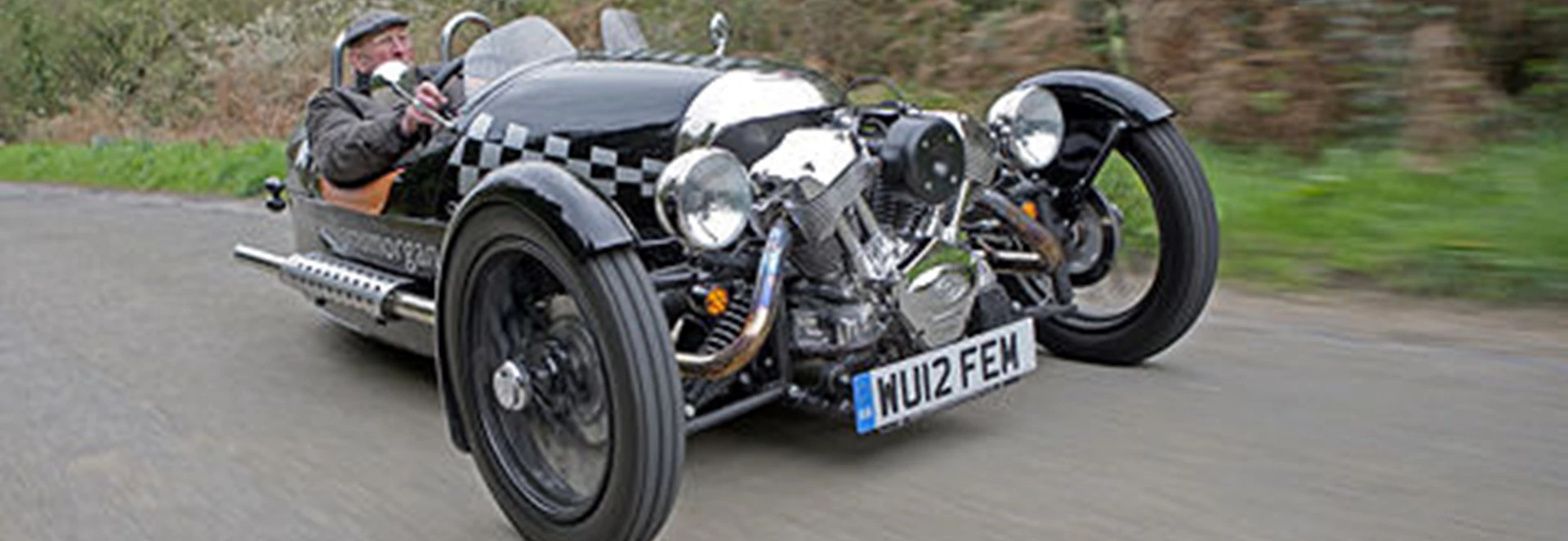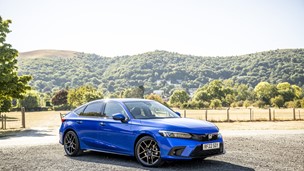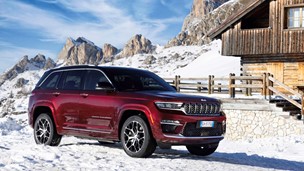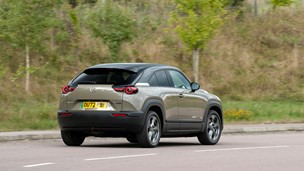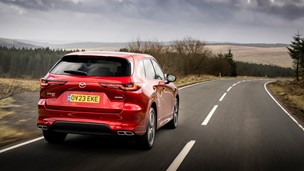Until recently, I was inclined to believe that you can't please all of the people all of the time. Then I drove the Morgan Three-Wheeler. From young children to octogenarians (and beyond), there isn't anyone who doesn't smile, wave or proffer a big thumbs up as soon as they clap eyes on arguably the most fun sportscar unveiled so far this century. It seems that happiness can be omipresent after all.As soon as Morgan revealed the Three-Wheeler at the 2011 Geneva Motor Show, it was obvious the decision was long overdue. Nearly 500 buyers couldn't pay their deposits quickly enough, and since then orders have continued to accumulate. Considering Morgan's lifeblood in its early days was a succession of models without a full complement of wheels, revisiting the formula was an obvious idea – but not until it actually happened.Morgan hasn't just put its original 1930s model back into production though; this is an all-new car, even if it may not appear so. One of the key changes is in cabin width; the new car is wider than before, but it's still tight.Jump in (the steering wheel is removable to make things easier) and you have to sit on the transmission tunnel to latch the safety belt before you settle down into the seat. Once in place it's comfy, but with a fixed chair, set low, the high cowl makes it hard to place the nearside wheel if you're short, while there are adjustable pedals.Turn the ignition key, flip up the "bomb release" flap for the starter button (is this the most inspired dashboard feature ever?) and the engine fires after a few seconds of churning, settling to a lumpy idle. With such large combustion chambers and just two cylinders, it would be easy to assume the Three-Wheeler would leap all over the place at idle, but it's all pretty civilised, thanks to the stiff suspension and the powerplant's rubber mountings doing their stuff.With each of the two cylinders displacing almost a litre, there's ample torque for a smooth getaway, but once you're moving it's best to have a couple of thousand revs on the dial if the engine isn't to feel as though it's going to shake itself apart; it's the meagre cylinder count that does it.However, keep the revs above 2000 and the car just flies; the sprint from a standing start to 60mph is pegged at under six seconds, and it's a claim that's easy to believe.The Three-Wheeler is geared towards vigorous acceleration rather than a generous top speed; it's claimed to peak at 115mph. That's more than enough, because up to 60mph things remain reasonably calm, but by 80mph all hell breaks loose and it feels as though you're breaking the sound barrier. Better instead just to savour the acceleration at every opportunity; even around town it's hard not to make the most of it.The most important way in which the Three-Wheeler has moved on from the original is in the ease of driving; it's as easy to pilot as any current sportscar. The Mazda MX-5-sourced five-speed gearbox is simple to use and the controls are conventional. The pedals are close together, but they're well-weighted and linear, making them very easy to use.As you let the clutch out and increase the revs, the volume increases but it becomes smoother, although it's still plenty raucous enough. However, the peace is more likely to be shattered by the gearbox noise than anything emanating from the exhausts; it's surprising how much transmission whine there is.Once you're on the move the Three-Wheeler just pulls; with just half a tonne to propel, that two-pot engine doesn't have to work very hard, but what's surprising is how effortless it all is. Squeeze the throttle and the Three-Wheeler just gathers speed – and keeps on gathering it, inexorably.The limiting factor is invariably the road surface; not how much grip there is, but how many bumps it contains, as the suspension is firm. This, combined with the low kerb weight, ensures that if you hit a bump at speed the car is deflected, but that's part of the Three-Wheeler's charm; this is no anodyne sportster with over-damped steering and soft suspension.The steering wheel looks too big but is actually ideally-sized, as there's more weight over those skinny front tyres than you might think. There's also hardly any lock, and no power assistance, so a decently-sized wheel is essential if you're not to risk a hernia every time you manoeuvre in a confined space.The result of that large wheel is an ideal weighting for the steering at most speeds, although sometimes on the move it weights up a touch too much if you barrel into a tight corner. But this lends a vintage feel to the driving experience which is exacerbated by the way you position your body when driving, with your right arm hanging over the side of the cabin and your head leaning out to the side. Certainly if you're short, when cornering it's easiest to peer between the cowling and the wing mirror, on its long, slender stalk.What's most surprising is the stability; it's not immediately obvious at sane speeds that there's a wheel missing. Such is the width of the front track and rear tyre (there's 205/55 rubber at the back) that you’ve got to be going some to unsettle the Three-Wheeler.As the cheapest Morgan, the Three-Wheeler may be missing a wheel, but it's also proof that less can be more. Indeed, this car arguably dishes up more fun than anything currently built in Malvern, with its fabulous two-pot soundtrack, exhilarating performance and brilliant design. If you're tempted but not yet on the waiting list, we'd suggest you get on there quick, because the queues are only going to get longer. Engine 1976cc, 2 cylinders Power 82bhp Transmission 5-speed manual Fuel/CO2 26.0mpg / 215g/km Acceleration 0-62mph: 6.0 seconds Top speed 115mph Price £30,000 Details correct at publication date
